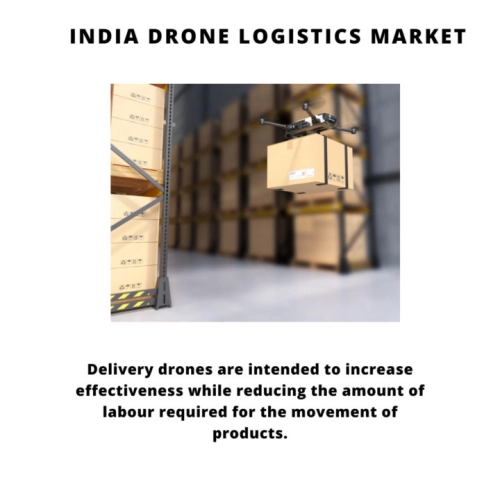
- Get in Touch with Us

Last Updated: Apr 26, 2025 | Study Period: 2022-2027
Delivery drones are intended to increase effectiveness while reducing the amount of labour required for the movement of products.

Allowing these gadgets to fly in the community has benefits and drawbacks because it exposes residents to increased noise pollution and security issues. However, advocates for drones will highlight advantages like decreased pollution, faster delivery, and safer transportation.
Undoubtedly, the noise pollution in neighbourhoods will increase as drones fly. Then there's the issue of who to sue if a delivery drone accidentally hits you in the head.
The Benefit Rapid deployment and doorstep deliveries are examples of easy delivery.
In contrast to conventional transportation methods, drones can handle challenging terrains including jungles, hills, and mountains and frequently design a much shorter and direct path.
Drones can avoid transportation infrastructure, thus they do not get stuck in traffic, lines, or queues. However, obstructions like wires or big trees prevent them.
VTOL capabilities allow them to deliver packages precisely and carefully. Consider it a GPS with pinpoint accuracy.
does not need a human to be involved, and the process can be automated over time with an investment in machine learning.
The India drone logistics market accounted for $XX Billion in 2021 and is anticipated to reach $XX Billion by 2026, registering a CAGR of XX% from 2022 to 2027.
During the E-commerce Logistics Summit, TechEagle will unveil "one of the fastest drones ever produced in India" in Mumbai.
The new variety of drone will be used for delivery in the maritime, defence, hyperlocal, e-commerce, and healthcare sectors. created by the TechEagle core team
The drone operator intends to launch a full-service on-demand drone logistics airline soon.
| Sl no | Topic |
| 1 | Market Segmentation |
| 2 | Scope of the report |
| 3 | Abbreviations |
| 4 | Research Methodology |
| 5 | Executive Summary |
| 6 | Introduction |
| 7 | Insights from Industry stakeholders |
| 8 | Cost breakdown of Product by sub-components and average profit margin |
| 9 | Disruptive innovation in the Industry |
| 10 | Technology trends in the Industry |
| 11 | Consumer trends in the industry |
| 12 | Recent Production Milestones |
| 13 | Component Manufacturing in US, EU and China |
| 14 | COVID-19 impact on overall market |
| 15 | COVID-19 impact on Production of components |
| 16 | COVID-19 impact on Point of sale |
| 17 | Market Segmentation, Dynamics and Forecast by Geography, 2022-2027 |
| 18 | Market Segmentation, Dynamics and Forecast by Product Type, 2022-2027 |
| 19 | Market Segmentation, Dynamics and Forecast by Application, 2022-2027 |
| 20 | Market Segmentation, Dynamics and Forecast by End use, 2022-2027 |
| 21 | Product installation rate by OEM, 2022 |
| 22 | Incline/Decline in Average B-2-B selling price in past 5 years |
| 23 | Competition from substitute products |
| 24 | Gross margin and average profitability of suppliers |
| 25 | New product development in past 12 months |
| 26 | M&A in past 12 months |
| 27 | Growth strategy of leading players |
| 28 | Market share of vendors, 2022 |
| 29 | Company Profiles |
| 30 | Unmet needs and opportunity for new suppliers |
| 31 | Conclusion |
| 32 | Appendix |